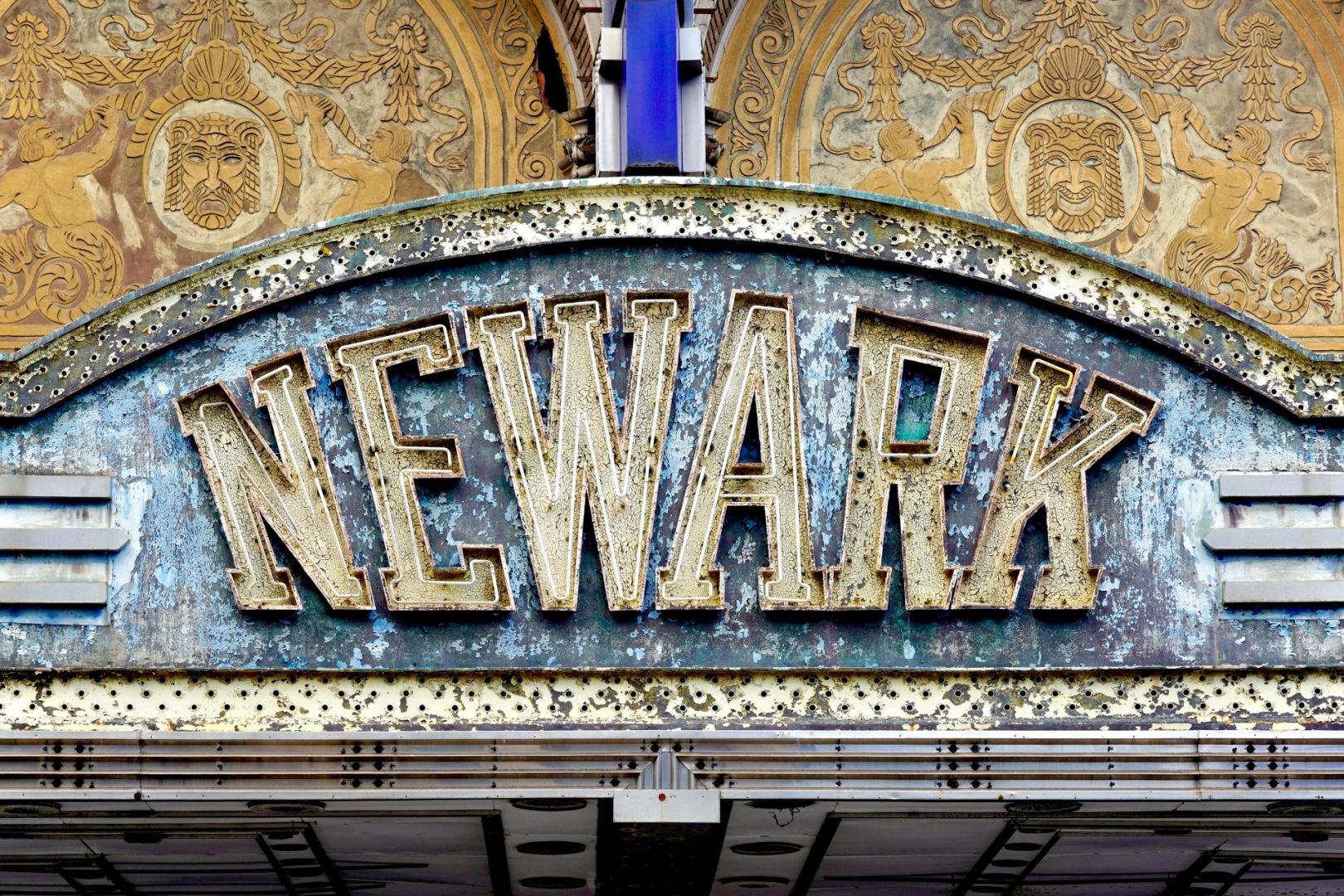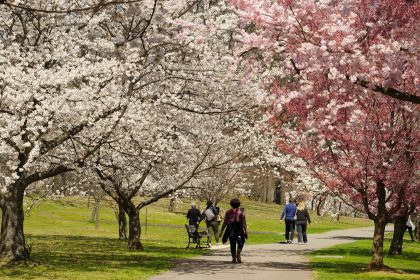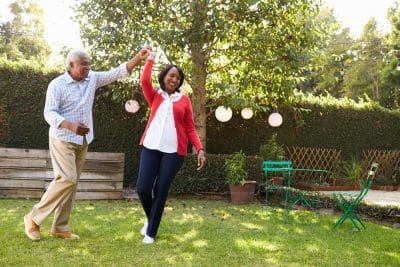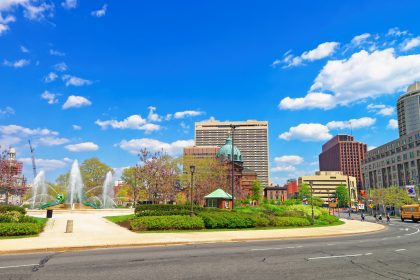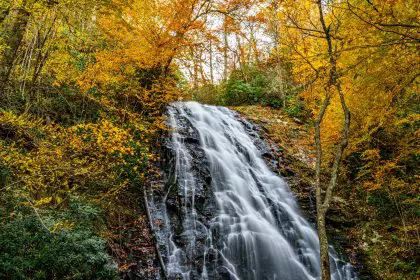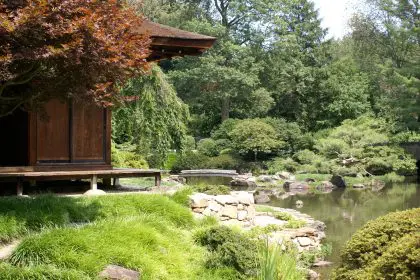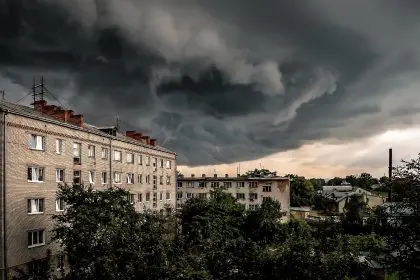The crushing weight of New York City’s relentless energy eventually exhausts even the most devoted urbanites, creating desperate needs for accessible refuges that don’t require cross-country flights or expensive weekend getaways. Newark, sitting just across the Hudson River, offers surprisingly restorative experiences that provide immediate relief from metropolitan overwhelm.
The misconceptions surrounding Newark have kept many of its most peaceful locations relatively undiscovered by stressed New Yorkers seeking respite. This urban oversight creates opportunities for genuine relaxation in spaces that remain authentic to their communities rather than commercialized for tourist consumption.
The psychological benefits of simply crossing water and entering different municipal boundaries cannot be understated when seeking mental refreshment. Newark’s distinct character and pace provide enough contrast to shift perspectives while remaining conveniently accessible for spontaneous escape missions from Manhattan pressure.
Understanding Newark’s hidden gems requires looking beyond outdated stereotypes to discover the cultural richness, natural beauty, and community spaces that make this city a legitimate sanctuary for overwhelmed urbanites. These locations offer genuine restoration rather than manufactured tourist experiences.
The proximity factor makes Newark particularly valuable for New Yorkers experiencing burnout symptoms who need immediate relief but lack time or resources for elaborate getaway plans. Simple train rides or quick drives can transport stressed individuals into entirely different environments within minutes.
The appeal of authentic urban alternatives
Newark’s authenticity stems from its focus on serving local communities rather than catering primarily to visitors, creating environments where genuine relaxation occurs naturally. This community-centered approach produces spaces that feel welcoming and unpretentious compared to commercially driven destinations.
The diversity within Newark’s neighborhoods creates varied experiences within a compact geographic area, allowing visitors to explore different cultural influences and atmospheric qualities without extensive travel between locations. This variety prevents the monotony that can characterize some escape destinations.
Cultural authenticity appears throughout Newark’s food scenes, artistic expressions, and community gathering spaces in ways that feel organic rather than curated for external consumption. This genuineness provides refreshing contrasts to New York’s often performative social environments.
The economic accessibility of most Newark destinations removes financial stress from relaxation seeking, allowing visitors to focus entirely on restoration without budget anxiety that can undermine escape experiences. This affordability makes regular visits sustainable for various income levels.
1. Weequahic Park’s lakeside tranquility and recreational options
Weequahic Park centers around a peaceful lake that immediately shifts mental focus from urban stress to natural rhythms and scenic beauty. The 311-acre park provides extensive opportunities for quiet contemplation, gentle exercise, and connection with nature within urban boundaries.
The lake itself supports various waterfowl populations that provide entertainment through natural behaviors while creating calming soundscapes that mask traffic noise and urban commotion. Watching ducks, geese, and occasional herons creates meditative experiences that reset overwhelmed nervous systems.
Walking paths around the lake perimeter offer measured distances for customizable exercise experiences, from short relaxation walks to longer cardiovascular sessions based on individual energy levels and available time. The predictable route eliminates navigation stress while providing varied scenery.
Picnic areas throughout the park accommodate outdoor dining experiences that encourage slower meal consumption and social connection in natural settings. These spaces provide alternatives to rushed restaurant meals while supporting relaxation through outdoor air and scenic views.
The park’s golf course adds to the overall sense of spaciousness and recreational variety without requiring participation. Simply seeing expansive green spaces helps counteract the visual density that characterizes much of New York City living.
2. Branch Brook Park’s cherry blossom sanctuary
Branch Brook Park’s claim to fame involves its spectacular collection of over 5,000 cherry trees that create one of America’s most impressive spring displays. However, the park’s 360 acres provide year-round opportunities for peaceful recreation and natural connection.
The seasonal cherry blossom period transforms the park into a pink paradise that rivals any destination worldwide, providing accessible natural beauty that eliminates needs for expensive travel to famous flowering locations. This spectacular display occurs annually without admission fees or advance reservations.
Beyond spring blooms, the park’s diverse landscapes include lakes, streams, wooded areas, and open meadows that support different recreational preferences and seasonal activities. This variety ensures that multiple visits provide fresh experiences rather than repetitive encounters.
The park’s size allows for genuine solitude even during busier periods, with numerous secluded areas where individuals can find privacy for reading, meditation, or simply sitting quietly without social pressure or performance expectations.
Cathedral Basilica of the Sacred Heart sits adjacent to the park, providing architectural beauty and spiritual atmosphere for those seeking contemplative experiences regardless of religious affiliation. The Gothic Revival structure offers impressive artistic details and peaceful interior spaces.
3. Ironbound District’s authentic cultural immersion
The Ironbound neighborhood represents Newark’s most vibrant cultural district, featuring predominantly Portuguese and Brazilian communities that create immersive experiences without tourist-focused commercialization. This authenticity provides genuine cultural enrichment while maintaining welcoming, comfortable atmospheres.
Restaurants throughout the district offer opportunities for leisurely dining experiences that emphasize quality ingredients, traditional preparation methods, and community atmosphere rather than rushed service or trendy presentation. These establishments often feel like extended family gatherings rather than commercial transactions.
Markets and specialty shops provide opportunities for gentle exploration and discovery of international ingredients, baked goods, and cultural items. Browsing through these authentic businesses offers sensory variety and learning experiences without pressure to purchase or consume rapidly.
The neighborhood’s architecture reflects its immigrant heritage through colorful buildings, religious murals, and community gathering spaces that tell stories of cultural preservation and adaptation. Walking these streets provides visual interest while connecting visitors to human stories of resilience and community building.
Annual festivals and community celebrations throughout the year create opportunities for authentic cultural participation without overwhelming crowds or commercial focus. These events emphasize community connection and cultural sharing rather than entertainment consumption.
4. Newark Museum of Art’s contemplative collections
The Newark Museum of Art houses diverse collections spanning American art, contemporary works, decorative arts, and cultural artifacts in environments designed for quiet contemplation rather than rushed viewing. The museum’s manageable size prevents overwhelming feelings while ensuring quality over quantity experiences.
Gallery spaces provide comfortable seating areas that encourage extended engagement with individual artworks, fostering deep appreciation rather than superficial browsing. This approach transforms museum visits into meditative experiences that can provide genuine intellectual and emotional restoration.
The Dreyfuss Planetarium within the museum offers unique opportunities for cosmic contemplation through astronomy programs that inspire wonder while providing refreshing perspective on daily concerns. These experiences help shift focus from immediate stressors to broader universal contexts.
Special exhibitions rotate regularly, providing reasons for repeat visits while ensuring fresh experiences that prevent museum fatigue. These changing displays often focus on specific themes or artists that allow for deeper exploration rather than overwhelming variety.
The museum’s cafe and outdoor sculpture garden extend opportunities for relaxation beyond gallery spaces, providing areas for reflection and discussion of artistic experiences in comfortable, unhurried environments.
5. Military Park’s downtown green oasis
Military Park serves as Newark’s premier downtown green space, providing immediate natural refuge in the heart of the business district. Recent renovations have enhanced the park’s accessibility and amenities while maintaining its role as a community gathering place and urban sanctuary.
The park’s central location makes it easily accessible for quick breaks from urban intensity while providing sufficient space and natural elements to create genuine restoration opportunities. This convenience eliminates barriers to regular stress relief while maintaining quality peaceful experiences.
Seasonal programming includes concerts, markets, and community events that provide entertainment and social opportunities while maintaining family-friendly, community-focused atmospheres. These events create reasons for repeat visits while supporting local cultural life.
Food vendors and nearby restaurants provide dining options that support extended park visits while accommodating various dietary preferences and budget considerations. The ability to combine outdoor relaxation with quality meals enhances overall restoration experiences.
The park’s design balances open areas suitable for activities with quieter zones designed for contemplation, ensuring that different visitor needs can be accommodated simultaneously without conflicts or overcrowding.
6. Riverfront Park’s waterside serenity
Newark’s Riverfront Park provides peaceful walking paths along the Passaic River with water views that immediately shift mental focus from urban density to natural flow and movement. The linear park design accommodates various activity levels while maintaining scenic beauty throughout.
Water elements provide natural soundscapes that mask urban noise while creating meditative backgrounds for walking, sitting, or contemplating. The psychological benefits of water proximity include reduced stress hormones and improved mood regulation that occur relatively quickly during visits.
The park connects to broader regional trail systems, allowing for extended exploration opportunities for visitors seeking longer outdoor experiences. However, shorter visits within the immediate park boundaries provide substantial restoration benefits without requiring extensive time commitments.
Fishing opportunities along certain sections of the riverfront provide meditative activities that require patience and present-moment focus while connecting participants to natural rhythms and processes. This activity offers stress relief through required attention to immediate surroundings.
Views across the water toward different landscapes help create psychological distance from immediate urban concerns while maintaining convenient access to city amenities when needed.
7. Newark Public Library’s architectural beauty and quiet spaces
The Newark Public Library system includes the magnificent main branch designed by renowned architects, featuring beautiful reading rooms, comfortable seating areas, and extensive collections housed in architecturally impressive spaces that provide both intellectual resources and aesthetic pleasure.
The library’s historic architecture creates environments that feel significant and peaceful, with high ceilings, natural light, and thoughtful design details that elevate simple activities like reading or studying into more meaningful experiences.
Quiet study areas throughout the library provide refuges from urban noise while supporting various activities from casual reading to serious research. These spaces offer mental stimulation opportunities without the competitive pressure that characterizes many urban environments.
Special collections and exhibits provide learning opportunities that can shift focus from daily stressors to broader intellectual interests and cultural appreciation. These resources often include materials not readily available elsewhere, making library visits feel special and enriching.
Free programming including lectures, book discussions, and cultural events creates opportunities for community connection and intellectual engagement without commercial pressure or entertainment industry stress.
8. Portuguese and Brazilian cafes for authentic relaxation
The Ironbound District’s numerous cafes provide opportunities for authentic cultural experiences through traditional coffee preparations, baked goods, and relaxed social atmospheres that emphasize conversation and community over rapid consumption.
Traditional pastries and coffee preparations offer sensory experiences that differ significantly from typical American cafe fare, providing cultural education through taste and aroma while supporting relaxation through familiar comfort food associations.
Many cafes feature outdoor seating that supports people-watching and street life observation in communities where foot traffic moves at more relaxed paces than typical Manhattan environments. This slower rhythm helps reset internal pacing while providing social connection opportunities.
The authentic community atmosphere in these establishments creates welcoming environments where visitors can experience genuine cultural immersion without feeling like tourists or outsiders. This inclusion provides social restoration while respecting community spaces.
Language diversity within these cafes provides auditory variety that can be soothing for ears accustomed to English-dominated environments while creating opportunities for cultural appreciation and learning.
Planning effective Newark escapes from NYC stress
Transportation options from Manhattan to Newark include convenient train services, bus routes, and car access that make trips feel easy rather than burdensome. Understanding these options prevents transportation stress while enabling spontaneous escape decisions when relief is needed most.
Timing considerations help optimize Newark visits by avoiding peak hours and identifying periods when specific locations provide optimal peaceful experiences. Understanding seasonal factors and local patterns enhances restoration potential while preventing disappointment.
Combination approaches that include multiple peaceful locations within single trips extend restoration benefits while maintaining variety that prevents monotony. Planning routes that connect several calming destinations maximizes escape value while justifying travel effort.
Budget planning for Newark visits typically involves minimal expenses beyond transportation, making these escapes accessible for various financial situations while providing significant value in terms of stress relief and mental health benefits.
Safety considerations for Newark visits involve basic urban awareness while recognizing that many peaceful locations exist in well-maintained, community-focused areas that welcome visitors seeking genuine relaxation and cultural appreciation.
Newark’s peaceful offerings provide legitimate alternatives to New York City’s intensity while remaining conveniently accessible for regular stress relief and mental restoration. These locations demonstrate that urban escapes don’t require extensive travel or expensive investments to provide meaningful benefits for overwhelmed city residents.
The key to maximizing Newark’s restorative potential involves approaching these destinations with openness to different cultural experiences while maintaining focus on personal restoration needs rather than tourist achievement goals. This mindset shift often provides as much benefit as the destinations themselves, creating sustainable practices for managing urban stress through accessible community resources.

